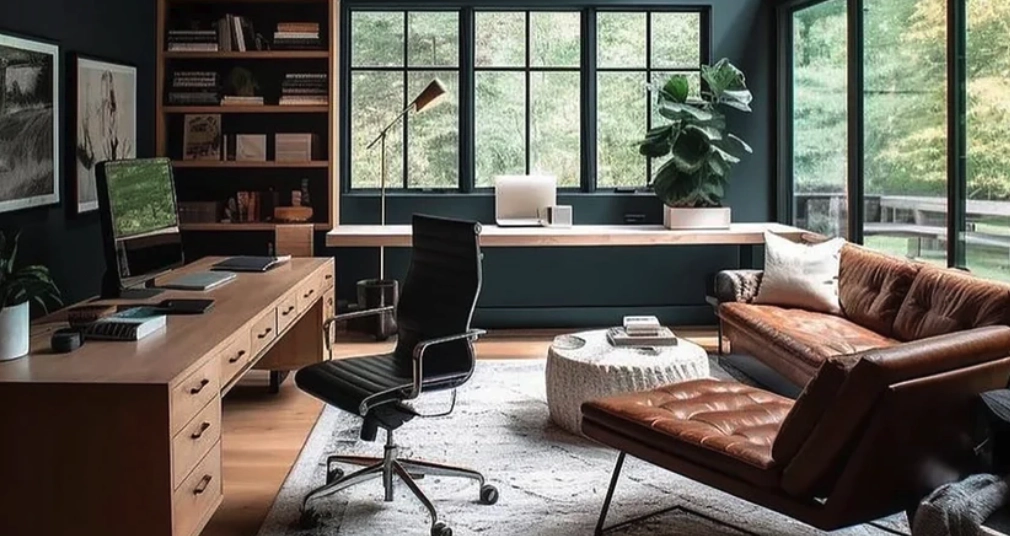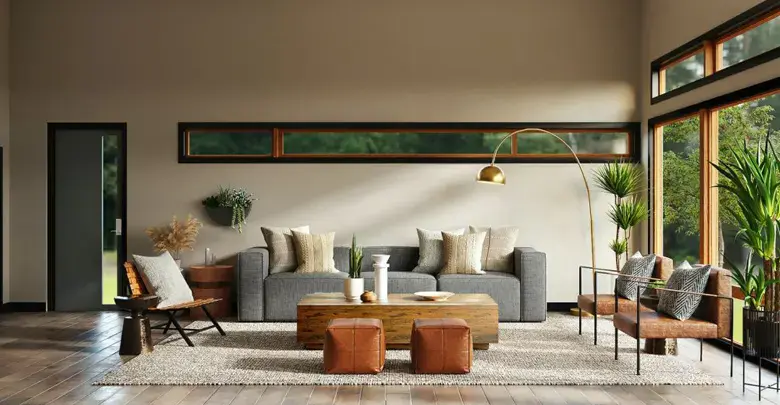
1. Choose the Right Location for Your Home Office
The first step in designing your dream home office is selecting the best location. Ideally, your workspace should be in a quiet, low-traffic area where you can focus. If possible, choose a space that offers natural light, as exposure to sunlight has been shown to improve mood and productivity.
- Natural Lighting: Studies show that natural light can improve productivity by up to 20%.
- Noise Consideration: If you can’t find a completely quiet spot, invest in noise-canceling headphones or soundproofing solutions.
2. Invest in a Comfortable and Ergonomic Chair
Spending hours at your desk can take a toll on your body, especially if your chair isn’t ergonomic. A comfortable office chair is essential for reducing back pain and promoting good posture. Look for a chair with adjustable height, lumbar support, and armrests.
- Ergonomic Chairs: According to the National Institute for Occupational Safety and Health (NIOSH), an ergonomic chair can help prevent discomfort and fatigue during long hours of sitting.
- Top Picks: Brands like Herman Miller and Steelcase are known for their ergonomic designs.
3. Optimize Your Desk Space
Your desk is the centerpiece of your home office, so it’s important to choose one that suits your work style and provides enough space for your essential tools. A clean, clutter-free desk helps you stay organized and focused.
- Desk Size: Select a desk with enough surface area for your computer, writing materials, and any other tools you use regularly.
- Cable Management: Use cable organizers or trays to keep cords tidy and out of sight, reducing distractions.
4. Create a Productive Workspace with Smart Storage
Good organization is key to an effective home office. Smart storage solutions will help you declutter your desk and keep important items within easy reach. Use file cabinets, bookshelves, or wall-mounted shelves to keep documents, supplies, and gadgets organized.
- Drawer Organizers: Keep pens, notebooks, and miscellaneous office supplies neatly organized.
- Vertical Storage: If space is limited, consider installing shelves or using stackable storage bins to maximize vertical space.
5. Personalize Your Home Office Design
While comfort and efficiency are important, personalizing your space can help you feel more inspired and motivated. Add some decor that reflects your personality and style, such as:
- Artwork: Hang some of your favorite art or motivational quotes to create an environment that inspires creativity.
- Plants: Indoor plants not only look great but also improve air quality and reduce stress.
6. Set Up Technology and Equipment for Success
A functional home office requires the right technology and equipment to help you perform your tasks efficiently. Ensure you have a high-speed internet connection, a reliable computer, and any specialized equipment required for your work.
- Ergonomic Keyboard and Mouse: Consider investing in an ergonomic keyboard and mouse to reduce strain on your wrists and hands.
- Monitor Setup: If you work long hours at your computer, invest in a large monitor or dual monitors to reduce eye strain and increase productivity.
7. Incorporate Smart Office Tools for Efficiency
Using smart office technology can greatly enhance the efficiency of your home workspace. From smart lighting systems to automatic document scanners, technology can help streamline daily tasks and make your work life more manageable.
- Smart Lighting: Use adjustable smart lighting that can be dimmed or brightened depending on the time of day.
- Virtual Assistant: Consider using a smart speaker or virtual assistant (like Amazon Alexa or Google Assistant) to set reminders, manage your schedule, and even control lighting or other devices.
Chart: Recommended Home Office Budget Breakdown
| Item | Estimated Cost Range | Importance |
|---|---|---|
| Ergonomic Office Chair | $100 - $1,000 | High |
| Adjustable Desk | $150 - $500 | Medium |
| Monitor | $150 - $500 | High |
| Storage Solutions (shelves, filing cabinets) | $50 - $300 | Medium |
| Desk Lamp (Smart Lighting) | $30 - $150 | Medium |
| Plants and Decor | $20 - $100 | Low |
8. Maintain Work-Life Balance
Finally, one of the most important aspects of a home office setup is ensuring that it doesn’t invade your personal space. Set clear boundaries between work and home life by:
- Designating Work Hours: Set specific hours for work and personal time to maintain balance.
- Physical Separation: If possible, create a physical boundary between your work and living areas to mentally disconnect at the end of the day.
Conclusion
Designing your dream home office is not only about creating a functional workspace; it’s about crafting an environment that enhances both comfort and efficiency. By incorporating ergonomic furniture, smart storage, personal touches, and the latest technology, you can create a space that fosters productivity, creativity, and well-being.
Remember that your home office setup is an investment in your work life. With the right design, you can maximize comfort, minimize distractions, and boost your overall productivity. Start by focusing on your needs and preferences, and let your dream home office come to life!



